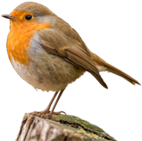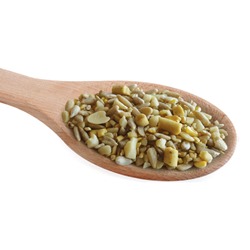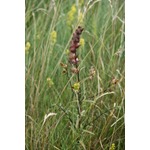Yellow Rattle Seeds 100%

- 20g packet
- 40g packet
- 100 g
- 250g packet
- 500 g Out of Stock
- 1 kg Out of Stock
Yellow rattle (Rhinanthus minor) is a semi-parasitic grassland annual that bears attractive yellow flowers. It is a very popular choice for wildflower meadows.
Using yellow rattle in wildflower meadows
In the past, this plant was a serious problem for farmers. Yellow rattle weakens grasses, and as a result, it can reduce hay yields by as much as 50%. However, in a landscape or garden context, this suppression of grass growth is welcomed as it produces a better display of wild flowers and eases the mowing required!
Yellow rattle germinates between late February and early March, then flowers in June and sets seed in July. As the annual yellow rattle plants die away at the end of each growing season, they leave behind gaps in which new flowers can establish themselves. As a result, wildflower seeds that are sown into an existing sward will establish more readily in areas where yellow rattle already does well.
Getting yellow rattle started
Yellow rattle establishment can be tricky and plant numbers may take two to three years to build up (depending on the sowing rate and site conditions).
Here are some top tips to help you get the best possible results when sowing your yellow rattle seeds...
SITE SELECTION
- Yellow rattle will not thrive in all grassland. Areas that are overgrown by coarse or vigorous grass (ryegrass, cocksfoot, tall oat-grass or couch) may be tricky. Grassland that is the result of sowing a meadow mixture should have suitable finer grasses, as will finer turf in gardens and meadows.
PREPARATION
- Cut (or graze if you have some sheep!) the sward in the autumn. Aim to keep the grass short (40-50mm). Graze or mow before and after seeding as needed.
- Create gaps across the site with exposed soil for yellow rattle seed to germinate in. This can be achieved by autumn/winter grazing with stock (their hooves open the sward) or mechanically by harrowing or raking, aiming to expose up to 50% bare soil.
SOWING
- Timing: Sow in the autumn as yellow rattle needs prolonged chilling through the winter to trigger its germination the following spring.
- Sowing rate: Yellow rattle seeds should be scattered onto the prepared surface at a rate of 0.1 to 1 g/m2.
Yellow rattle seeds may be sown as a component of a meadow mixture onto a prepared seedbed. To be sure of getting yellow rattle in the second year, it is best to re-sow yellow rattle in the autumn of the first year (as above). Where cornfield annuals have been sown as a ‘nurse crop', yellow rattle has more opportunity to self-seed.
Aftercare: managing swards for yellow rattle
Yellow rattle is an annual with short-lived seeds, so it needs a chance to set seed each year. To allow seeds to be set and scattered, don't cut before late July / early August.
Autumn grazing (or mowing and harrowing) is also important each year as it will help to keep the sward open. This is important in providing new sites into which yellow rattle can establish the following spring.
If you find that your yellow rattle is overtaking, you can mow early in the season (May / June) to prevent seeding for one season.
Our Yellow Rattle seed is wholly sourced in the South of England, currently there are crops in Hampshire, Somerset and Wiltshire.
FREE DELIVERY




























































































